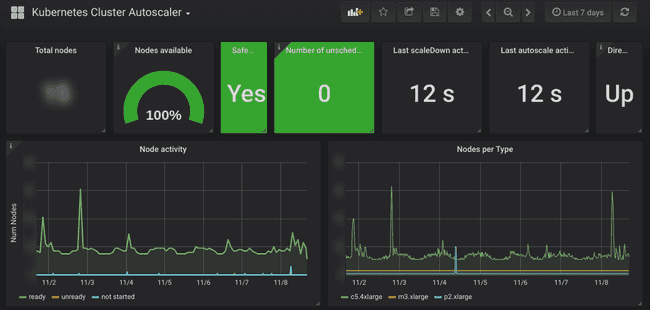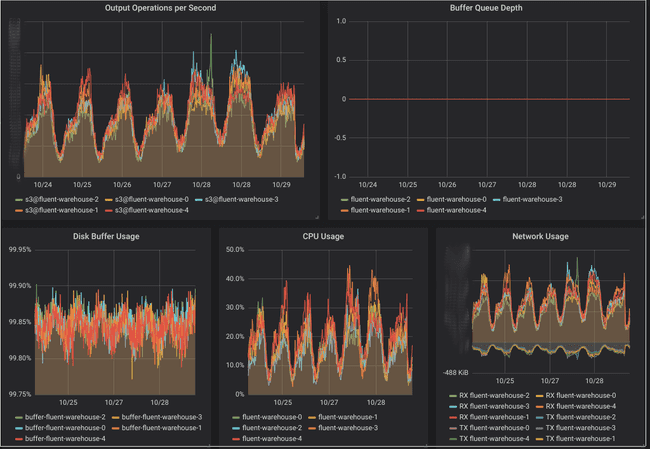5π Consulting
Koko: AI-Powered Community Moderation
From legacy infrastructure to over 100 million content moderation decisions per day and acquired by Airbnb.
Building an agile cloud native infrastructure for a high velocity AI based content moderation startup.

Working with Johannes enabled us to dramatically accelerate product development by having the rest of the engineering team focus 100% on feature development, deploying many times a day despite supporting a very high throughput application.
About Koko
The Internet can be a scary place. Koko keeps your community safe by using AI to identify bad actors and damaging content. Koko detects issues in real time and notifies your moderation system.
Koko was used by several top online communities to support over 100 million moderation decisions per day and was acquired by Airbnb in 2018.
Rancher to Kubernetes migration
When Koko contacted me, their infrastructure was running on an old version of Rancher which should be replaced by a Kubernetes cluster. I’ve migrated all deployment manifests to Kubernetes manifests and wrote scripts for CircleCI to continuously deploy code changes to the cluster. New branches get deployed to their own namespace with own ingresses to allow developers to worker independently while also allowing cross team and code base feature work.
To cleanup existing branches, I’ve developed k8s-ci-purger which cleans up Kubernetes resources on branch deletion.
Since self-service is paramount, Koko needed a safe and reliable way for developers to use internal services. This was solved by using oauth2_proxy to authenticate against GitHub. Additional changes to support Websockets for Jupyter Notebooks were added.
kubecfn - Cloudformation Kubernetes Installer
Initially, Koko used kops to deploy the
Kubernetes cluster. Customizing Kubernetes component configuration often
required upstream changes in a rapidly evolving code base. That didn’t only
slowed us down but also caused reliability issues due the dependency on unstable
versions. After investigating alternatives, which I also blogged
about, I proposed to
create a Cloudformation based
Kubernetes Installer around
kubeadm. The safety
first-design gave us the confidence required to quickly iterate by ensuring safe
rollouts of version and configuration changes.
The project was made open source and can be found
here
Argo Machine Learning Pipeline
The next thing to solve was how to run machine learning pipelines on the new cluster. There are several options but Argo seemed like the best fit. Being a generic workflow engine it extends the existing Kubernetes API allowing developers to use the same API and declarative manifests to run the pipelines.
The custom built Kubernetes installer made it easy to add another GPU-enabled worker instance group that automatically gets scaled up when a Argo pipeline requires GPU instances and back to zero after the jobs finished.
Autoscaling
 As in most infrastructures, Koko’s traffic pattern is diurnal with much higher
traffic during the (US) day than the night. Due to the nature of the service, it
fluctuates even more with short peaks and troughs when customers batch process
workloads. While Kubernetes provides simple CPU based autoscaling out the box,
this wasn’t sufficient to scale up quickly enough while preventing it from scale
down too early when a customer briefly stops sending requests.
As in most infrastructures, Koko’s traffic pattern is diurnal with much higher
traffic during the (US) day than the night. Due to the nature of the service, it
fluctuates even more with short peaks and troughs when customers batch process
workloads. While Kubernetes provides simple CPU based autoscaling out the box,
this wasn’t sufficient to scale up quickly enough while preventing it from scale
down too early when a customer briefly stops sending requests.
To solve that, I’ve introduced the Prometheus Monitoring System and used the k8s-prometheus-adapter to provide the metrics as Kubernetes Custom Metrics. This allowed me to create scaling rules for rapid scaling up while preventing underprovisioning by looking at past traffic patterns.
Observability
Koko used Datadog for monitoring and, once it was available, logging too. Since we weren’t very happy with the service and struggled to integrate custom metrics as well as metrics provided by infrastructure services, we decided to move all our monitoring to Prometheus. I’ve introduced Grafana with statically provisioned and CI deployed dashboards for system and infrastructure metrics, while also allowing developers to create their own dashboards ad-hoc, allowing for a self-service monitoring experience. I’ve built prometheus-renderer to render alerting expressions to provide graph previews in our slack alerts.
Since no logging services provided structured logging at a reasonable price, I’ve integrated the AWS Elasticsearch Service with fluent-bit which allowed us to browse, filter and graph logs as well as integrate them into Grafana dashboards.
Stream processing
 When Koko’s API receives content to classify, it needs to archive to S3 them for
running machine learning on it. Initially AWS Kinesis
Firehose was being used for
that. That allowed buffering and batching the data, even though further
processing to shard the data was necessary. Since it also doesn’t support VPC
Endpoints
Koko incurred high traffic costs.
When Koko’s API receives content to classify, it needs to archive to S3 them for
running machine learning on it. Initially AWS Kinesis
Firehose was being used for
that. That allowed buffering and batching the data, even though further
processing to shard the data was necessary. Since it also doesn’t support VPC
Endpoints
Koko incurred high traffic costs.
I’ve proposed and implemented a custom solution by using fluentd and Kubernetes statefulsets to replace Kinesis Firehose. This reduced Koko’s EC2 traffic costs by 80%. You can read more about the details in this blog article.
Conclusion
Koko’s ability to rapidly and reliably build new features helped it to attract some of the largest social networks.
I’m proud to have built the infrastructure that allowed Koko to be confident in change and deliver it fast, ultimately helping them to get acquired by Airbnb.
Do you want to accelerate your product development by building upon or migrating to modern cloud native infrastructure? Let me know!.

